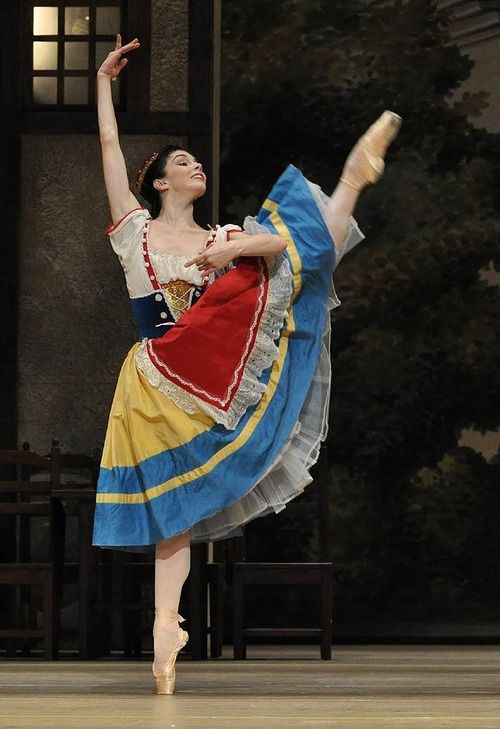Coppélia
Coppélia and Tales of Hoffmann share a couple of characters. This is no surprise since Charles Nuitter based the story on the Olympia (Doll) episode of Tales of Hoffmann. Fast forward 210 years to 1982's "Blade Runner" and we find a character similar to Dr. Coppelius in Eldon Tyrell, the megalomaniacal CEO of the Los Angeles-based Tyrell corporation that manufactured the replicants. Roy, Rachel, Leon, and Pris. Looking back into antiquity we can also consider Pygmalion and Galatea as part of this thread of man trying to create a perfect woman.
The story line in our Ballet involved four characters: Swanhilda, Franz, Coppélia and Dr. Coppelius. Swanhilda is the prettiest girl in the Austrian village in which the story is set. She is affianced to Franz and they plan to marry as part of a festival to celebrate the installation of a new bell in the town square. Any couple who marries during the festival will receive a cash gift.
While all this is going on Dr. Coppelius places his latest automata doll, Coppélia, at a balcony window appearing to read a book. Dr. Coppelius hopes to bring his beautiful creation to life through a mystical spell that requires a human sacrifice. Franz, Swanhilda's fiancé, has become fixated on the beautiful girl at the balcony. Swanhilda challenges Franz with a test. Swanhilda holds a staff of wheat straw to his ear and rattles it challenging Franz to admit that the straw is saying that Franz no longer loves Swanhilda, but rather Coppélia. But Franz says he hears nothing. Swanhilda breaks the straw and says she no longer loves him and calls off their engagement.
Franz, meanwhile, plans to use a ladder to scale the balcony to meet Coppélia. But earlier that afternoon as Dr. Coppelius was being harrased by a group of boys as he crosses the street, he dropps his keys and Swanhilda picks them up. She and her friends take the opportunity to enter Dr. Coppelius' home to learn more about her rival, Coppélia.
Swanhilda and her friends discover that his home is full of mechanical dolls that can be set into motion. And she discovers that Coppélia is also an automaton. Just as that discovery is made, Dr. Coppelius returns and the friends flee. But Swanhilda hides herself to further observe. Good thing she did because just then Dr. Coppelius apprehends Franz as he is climbing over the balcony wall. Dr. Coppelius entreats Franz with drugged wine to knock Franz out and Coppelius begins to perform a diabolical ritual to steal Franz's life and soul to animate Coppélia. Swanhilda intervnes, revives Franz and they both escape.
The village mayor pays Dr. Coppelius a fee to placate him for the damages caused by the girls, the village festival proceeds, the marriage takes place and the village celebrates.
Coppélia ballet, score by Leo Delibes, choreography by Marius Petipa
Natalia Osipova and the Bolshoi Ballet perform Coppélia. Ms. Osipova is one of the most accomplished ballerinas of our day. She has appeared all over the world.
Leo Delibes
Pizzicato from the ballet, Sylvia.
Leo Delibes is the composer that opened the Four Seasons Opera Club. Delibes is the composer of the opera, Lakme. Our first club event was a very light presentation not of a full opera but rather of just a duet. But not just any duet. The "Flower Duet" is perhpas the best known operatic duet in the entire opera canon. Just about everyone on the planet has heard the Flower Duet.
Delibes composed 25 operas, and three ballets. Lakme is the only one of his operas in the current canon. But both ballets Coppéli and Sylvia are part of the standared repertoire.



